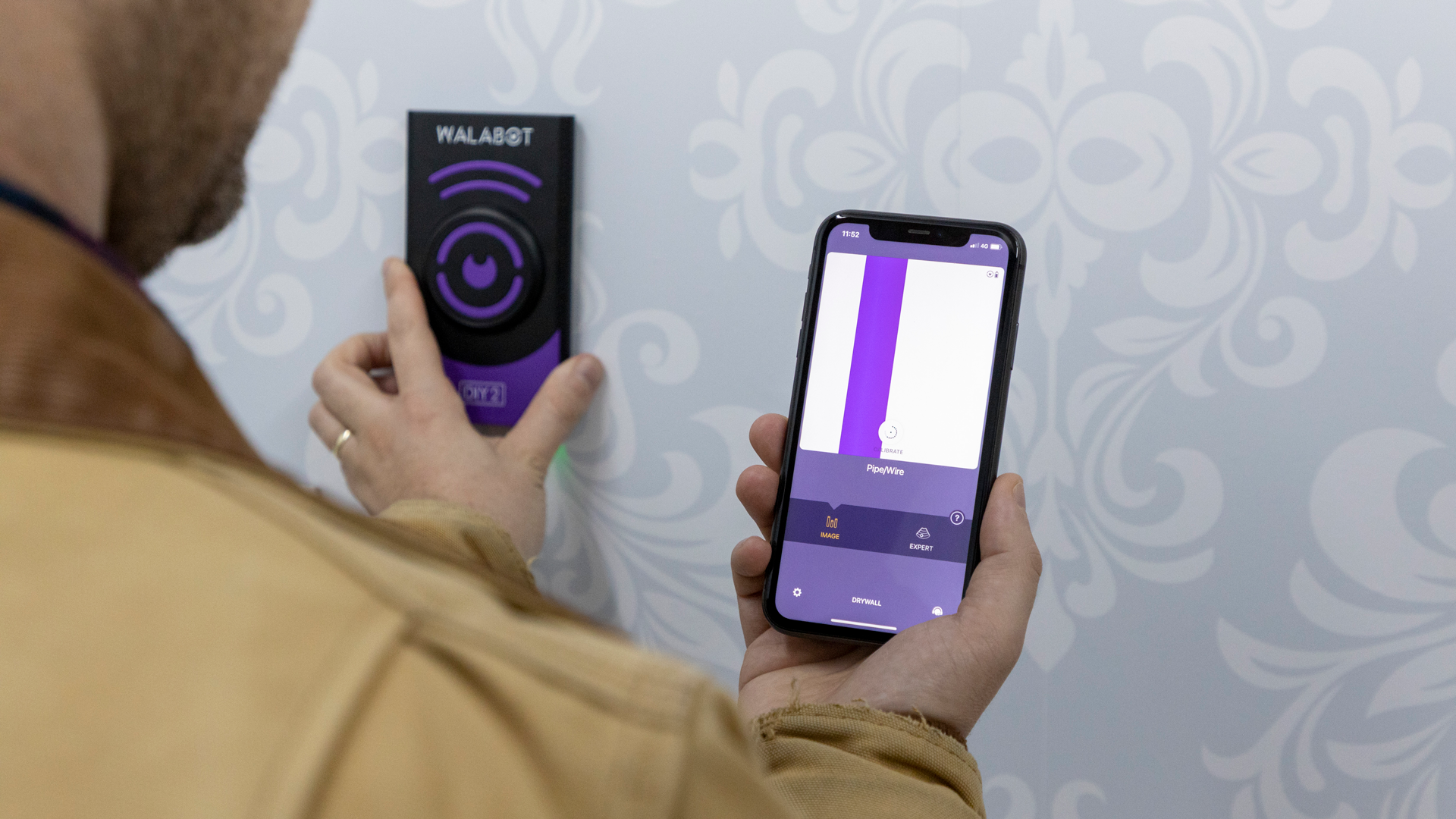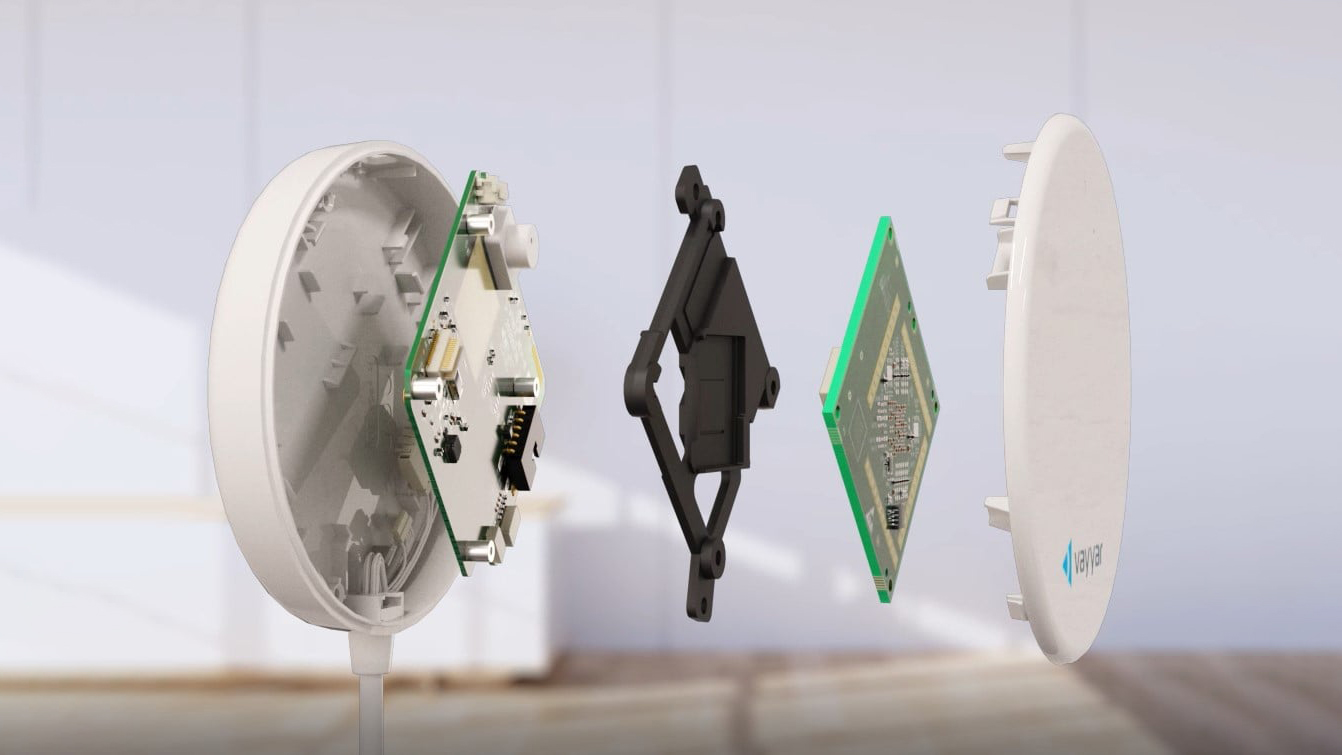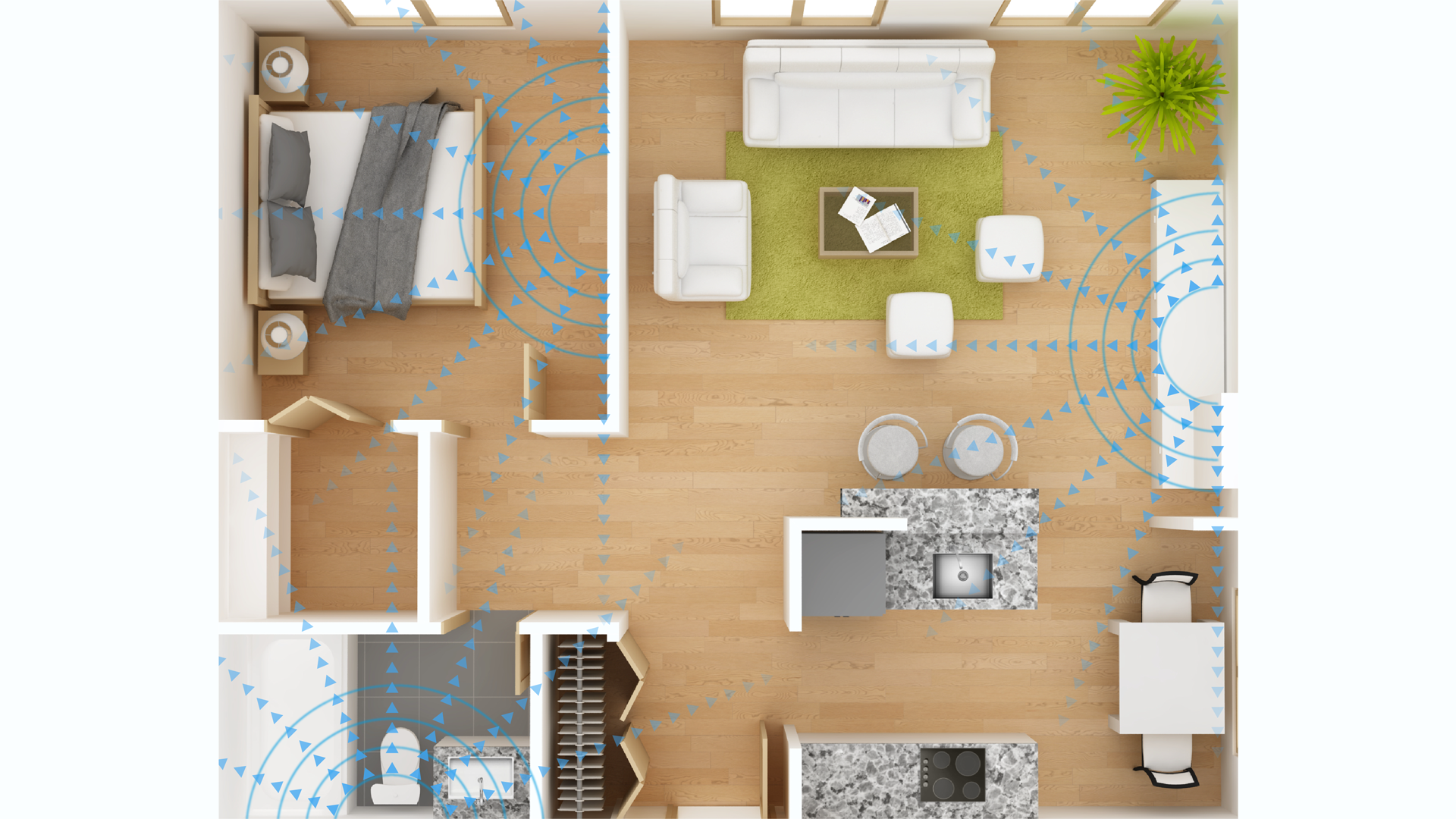Main Menu
Posted by Vayyar
June 14, 2020The Democratization of Radar

You might be wondering what we’re referring to, when we say “democratization.” What this means, is that radar is now in the hands of the whole world. For many years, radar uses were limited to the research lab, the military, and governments. Nowadays, with great advances that we’re going to discuss, we now have an opportunity to see radar in every single walk of life – whether it’s in a retail store, in an automobile, or even in a smart home.
For the first time, radar uses are expanding from the signals level to the applications level so that developers can build various types of new applications.
A Brief History of Radar Technology
So how did we get to where we are today? Although the first radar uses were back in the 1880s with Herz and with Maxwell, the momentum really started picking up in the 1920s. Three experiments were performed in the US Naval Research Laboratories.
1. The First Bistatic Radar
In 1922, a transmitter was placed on the bank of the Potomac River. On the other side, researchers placed a receiver. The devices sent waves from one side of the river to the other, and the signals came in exactly as they were transmitted: the first bistatic radar. When a ship would sail through the transmission beam, the received waves would fluctuate significantly. This was the first modern application of a bistatic radar.
2. First (Accidental) Use of Radar to Detect Aircraft
Let’s fast forward to 1930. Although the concept of radar hadn’t been developed yet, things were starting to percolate in different places. At the US Naval Research Lab, noted physicist L.A. Hyland was scanning the sky with beaming waves.
When aircraft passed through the waves, the waves that were received by Hyland’s antenna fluctuated significantly. This was the second monumental experiment in the world of radar development.
3. World War II & Radar
A decade after Hyland’s experiment, the world was at the eve of World War II. World War II saw extensive radar proliferation on land, in the air and at sea.
In 1939, an Allied battleship, the USS New York, had a radar installed onboard, with a single antenna. It received and transmitted waves to ‘see’ and understand what else was going on at sea. In fact, one of the large scale radars off the coast of Hawaii, an SCR 270, was able to spot Japanese warplanes approaching Pearl Harbor before that fateful attack.
The British Chain Home
Throughout World War II, radar was a major aspect of the battleground, specifically on the Allies’ side. Great Britain used radar to save more people than any other country during the war. In fact, they even set up the Chain Home: a series of large scale radars that provided alerts to British residents, notifying them of the direction of attacking German warplanes in order to help avoid bombings.
The Chain Home was made up of large radar towers that sent pulses into the sky (up to a hundred miles in every direction) in order to detect the oncoming German fighter planes. The output from these systems was a blip on a screen, something you might be familiar with from grainy TV footage.

Radar in the United States
While the war raged in Europe, new radar uses were emerging in the United States. In 1940, MIT set up a new radiation laboratory in which they started to develop the very first microwave radars. These radars were based on the cavity magnetron oscillator developed in the University of Birmingham by a group of British physicists who, during the war, shared this technology with the US team from MIT.
The next big development came with the advent of pulse radars. Taylor, Young, and Hyland developed these first pulse radars, and were now able to determine the height, range, and speed of an object with a much greater level of accuracy for the first time.
By the 1960s, large scale, electronically-steered phased array antennas tracked vast expanses of airspace, monitoring aviation and, for the first time, predicting weather patterns. The form factor of these radar systems was absolutely enormous, which is one of the reasons that radar was not accessible to civilians and private industries. Radar remained in the realm of labs, government agencies, and especially in the domain of the military.
The 1970s – Today: The Democratization of the Radar
With the influx of the digital revolution in the 1970s, drastic technological changes transpired. Perhaps the greatest advancement was the ability to perform large-scale signal processing as well as large-scale data processing. Once high-speed processing became a reality, radar uses began to move from the worlds of academia and defense into the hands of the regular person.
Today, RFIC based on CMOS has completely revolutionized the RF industry. Companies like Intel, Qualcomm, and Texas Instruments, as well as many research labs, have released production-level multi-system integrated transceivers.
When we look towards the next decade or even stop to review what’s already available in the everyday walk of life, it’s astounding to see how far we’ve come from radar’s humble beginnings. The transformation from large scale radars to micro radars that can see through the human body to detect cancer, is remarkable nonetheless.
Applications of Radar: From Saving Lives to Making the World More Connected
What makes radar so unique, is its ability to be used in so many different types of applications. Not just life-saving applications, but ones that make our lives easier or give us visibility into areas we couldn’t access before.
These advances make radar robust, accessible, and affordable. It’s a total paradigm shift from the world that radar used to be a part of. Unlike the past, where the focus of radar was mostly on its hardware and militaristic uses, we now see a shift to the application level.
The cost of hardware has reduced significantly, while the ability to create algorithms for complex signal processing has become more available on the individual level. Through these commercialized radars, this technology has been opened to a whole new user base, one that’s able to create sophisticated new applications.
A parallel analogy can be drawn from Raspberry Pi or Arduino, low-cost computer processing units that have enabled many people to create their own simple applications. These small, affordable computers open the playing field to more developers than ever before, and help them understand what’s happening inside the box.
Introducing the Vayyar V-trig Chip
Much like Raspberry Pi or Arduino, the Vayyar V-trig “open sources” the concept of app development. The V-trig was designed to help facilitate a generation of radar inventions. It is a high-frequency evaluation kit.
So How Does it Work?
The Vayyar V-trig is an RF imaging ASIC approximately 2x3cm, made out of silicon. It’s got 48 antennas, 24 Tx, 24 Rx in the same system. This transceiver system is able to drive infinite applications. The user has full control of the frequency range of 59-67 GHz, the resolution bandwidth and the scan range.
In addition to that, we have multiple profiles for the antennas themselves, whether you want to have a step function that includes use of all 24 by 24, or fewer antennas with a different purpose.
As noted, the V-trig connects to your processing unit via a USB. Your outputs include the raw data and the INQ. You can take this data and build applications on top of it driving your own algorithms to achieve whatever results you want.
Some Examples of What You Can Accomplish with the V-trig
With the V-trig, radar is really in the palm of your hands. Here are some applications developed by Vayyar and available to anyone with a V-trig. Let’s start off with perhaps the simplest: people tracking.
Object and People Detection in a Room
Generally, when we want to track people in a room, whether it’s in a home, a retail store or anywhere else, the way we would traditionally track them is via a camera. This camera would see a person and we’d have some type of complex image recognition software that would be able to determine that this is a man, a woman, a child, etc.
The same can be done with a radar, but for much cheaper. First, you create an arena in the room. It’s enclosed by the three Cartesian coordinates, an X, a Y, and a Z, emanating from the antennas of the V-trig. Inside of the arena, the V-trig transmits and receives radio waves. Everything in the room that has a reflection will be able to bounce a wave back to the V-trig. The receivers on the V-trig then collect that information and, at this point, with the help of an algorithm placed on top of the signals (the raw data), we’re able to determine what the sensor is seeing. This includes people, objects and pets.
Depending on how much resolution you have, you can get better, higher-definition 3D radar images. With the help of algorithms, the V-trig can take object recognition from these images and interpret them—classify them for you. It can tell if the object in question is a person, whether he’s standing up, sitting down or moving, not to mention how people are in the arena overall.
V-trig in the Automotive Market
Another use case built on the V-trig is within the automobile. By continuously scanning this “unique” arena, this intelligent sensor is able to track the environment and create a point cloud of the driver, passengers and vehicle surroundings.
With the V-trig, we can configure how many points you’ll have in your point cloud, depending on how many antennas we utilize, which profile, and how many data points we collect. This is directly based on your resolution bandwidth as well as the frequency range you choose to employ.
When you think about collision avoidance, in the automotive context, you have to be able to determine that there is an object in the vehicle’s radius, but you must do so with a very small form factor, operating at much faster speeds. This time, the enormous WWII British military radars won’t suffice. But with a radar smaller than the palm of your hand, the vehicle is suddenly equipped with collision avoidance, without the use of optics.
Inventory Management: the V-trig Tracks Products Shelf-by-Shelf
Here’s another cool application: we can use the V-trig to create images in the near field, such as inventory on a shelf.
This provides retailers with visibility into how many units remain on their shelves and when it’s time to replenish the stock. It can also give analytics into how successful the unit’s product placement is, by looking at how many get picked up and purchased compared to other configurations of shelf layout.
Health ‘Analytics’ and Breathing Monitoring with Radar
The V-trig’s ability to create very high resolution images is based on its ability to create many, many, many data points. This concept can be applied to determine the breathing rate of a human being. Perhaps somebody might be sleeping on a bed, and you want to track breathing patterns while they sleep to determine whether they have sleep apnea or whether they are sleeping well.
Aging in Place, With Dignity and Constant Safety AND Privacy
The final example of a V-trig application actually brings us right back to where we started. You saw how radar evolved from the military and research lab context, always with the purpose of saving lives, as it did with the ability to detect enemy fire. A Vayyar radar sensor, albeit with a very small form factor, applies this life-saving ideal to the smart-home.
Elderly people often live alone, but strive to continue living with dignity. Putting a camera in their bedroom or bathroom to make sure they’re ok isn’t a suitable solution. But with radar, you are able to determine the posture of a parent or loved one in a private and dignified manner. And, since radar sensors are affordable, you can deploy several of them in a loved one’s home for full coverage of the house. In fact, not only can you detect a fall, but you can create an entire suite of applications for health and wellness.
What the Future Holds for the V-trig
As radar continues to become more and more democratized, companies like Vayyar will continue to make it accessible and affordable for users and developers alike. This will, in turn, allow people to use complex technology in a simple manner and enable a greater number of people than ever before to use radar technology to build incredible applications. Now, a second generation of radar is in the doorway, and it’s going to reach far and wide, into fields that weren’t previously thought of. All with protection of privacy, affordability and versatility.
Five, ten years from now, who knows what we’ll see on the market? Radar will be in our everyday walks of life. There’s only one way to go. And that’s up.
The Post URL was successfully copied to your clipboard
Read more on #vayyar

Vayyar Appoints Tomo Taguchi to Lead Tokyo Office and Drive Growth
Read more
The Israeli Company with a Chip that “Sees” through Walls is Worth $1B
Read more
Vayyar Wins $108M Series E Funding Led by Koch Disruptive Technologies
Read more

